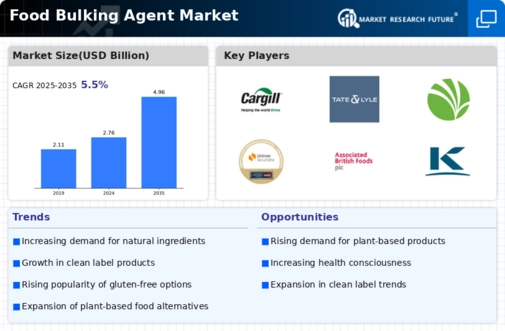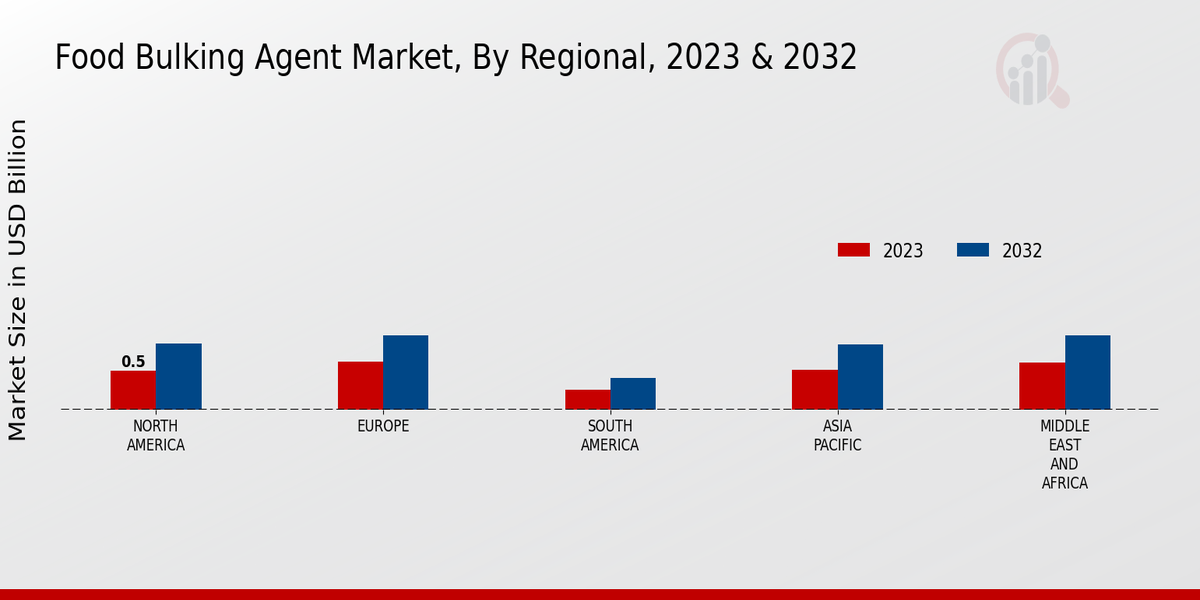Market Growth Projections
The Global Food Bulking Agent Market Industry is projected to experience substantial growth over the next decade. With a market value expected to reach 2.76 USD Billion in 2024 and 4.96 USD Billion by 2035, the industry is on a trajectory of robust expansion. The anticipated CAGR of 5.47% from 2025 to 2035 underscores the increasing utilization of bulking agents across various food applications. This growth is driven by factors such as rising consumer demand for processed foods, health trends, and technological advancements in food processing. The market's evolution reflects broader changes in consumer behavior and industry practices.
Health and Wellness Trends
There is a growing awareness among consumers regarding health and nutrition, which significantly influences the Global Food Bulking Agent Market Industry. As individuals seek healthier food options, manufacturers are increasingly incorporating natural bulking agents like psyllium husk and inulin into their products. These ingredients not only serve as bulking agents but also offer additional health benefits, such as improved digestive health. This shift towards healthier formulations is expected to drive the market, with projections indicating a growth to 4.96 USD Billion by 2035. The emphasis on clean label products further supports this trend, as consumers demand transparency in ingredient sourcing.
Rising Demand for Processed Foods
The increasing consumer preference for convenience foods is a primary driver of the Global Food Bulking Agent Market Industry. As lifestyles become busier, there is a notable shift towards processed foods that require bulking agents for texture and stability. This trend is expected to contribute to the market's growth, with the industry projected to reach 2.76 USD Billion in 2024. Bulking agents such as maltodextrin and modified starches are commonly used in these products, enhancing mouthfeel and improving shelf life. The demand for ready-to-eat meals and snacks is likely to bolster this sector further, indicating a robust trajectory for the market.
Emerging Markets and Globalization
The expansion of emerging markets is a significant driver for the Global Food Bulking Agent Market Industry. As economies develop, there is an increasing demand for processed and convenience foods, leading to a higher consumption of bulking agents. Globalization facilitates the entry of international food brands into these markets, further propelling the demand for bulking agents. This trend is expected to contribute to the overall market growth, with the industry poised to reach 4.96 USD Billion by 2035. The interplay between local preferences and global food trends creates a dynamic environment for bulking agents, indicating a promising future for the market.
Regulatory Support for Food Safety
The Global Food Bulking Agent Market Industry benefits from stringent regulatory frameworks that promote food safety and quality. Governments worldwide are implementing regulations that ensure the safe use of food additives, including bulking agents. This regulatory support fosters consumer confidence and encourages manufacturers to utilize bulking agents in their formulations. Compliance with these regulations is essential for market players, as it enhances product credibility and safety. As the industry adapts to these regulations, it is likely to see sustained growth, with a focus on safe and effective bulking agents that meet consumer expectations.
Technological Advancements in Food Processing
Innovations in food processing technology are transforming the Global Food Bulking Agent Market Industry. Advanced techniques such as spray drying and extrusion are enhancing the efficiency and effectiveness of bulking agents. These technologies allow for better integration of bulking agents into food products, improving texture and stability. As food manufacturers adopt these innovations, the market is likely to experience accelerated growth, with a projected CAGR of 5.47% from 2025 to 2035. This technological evolution not only optimizes production processes but also meets the evolving consumer demands for quality and consistency in food products.





















